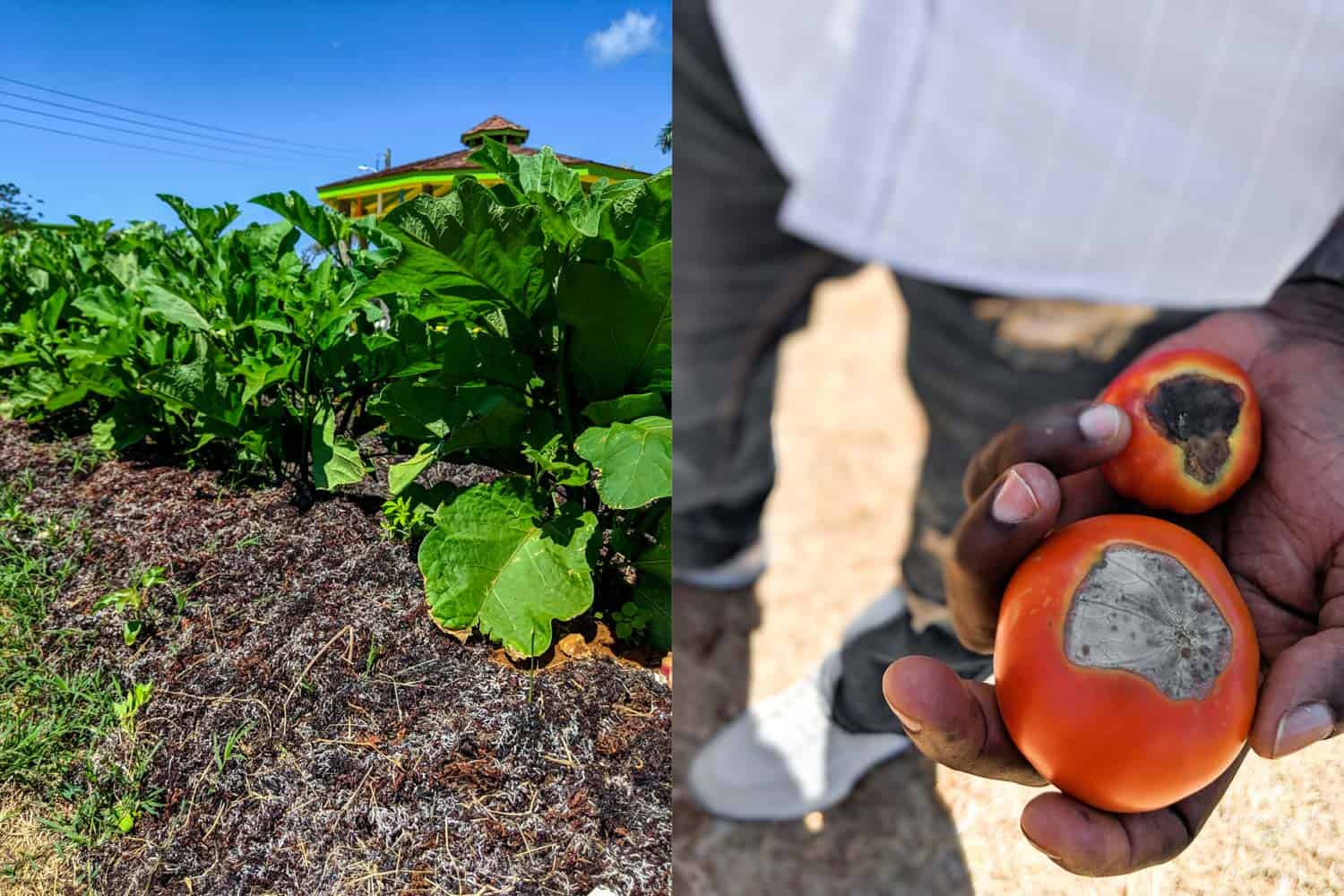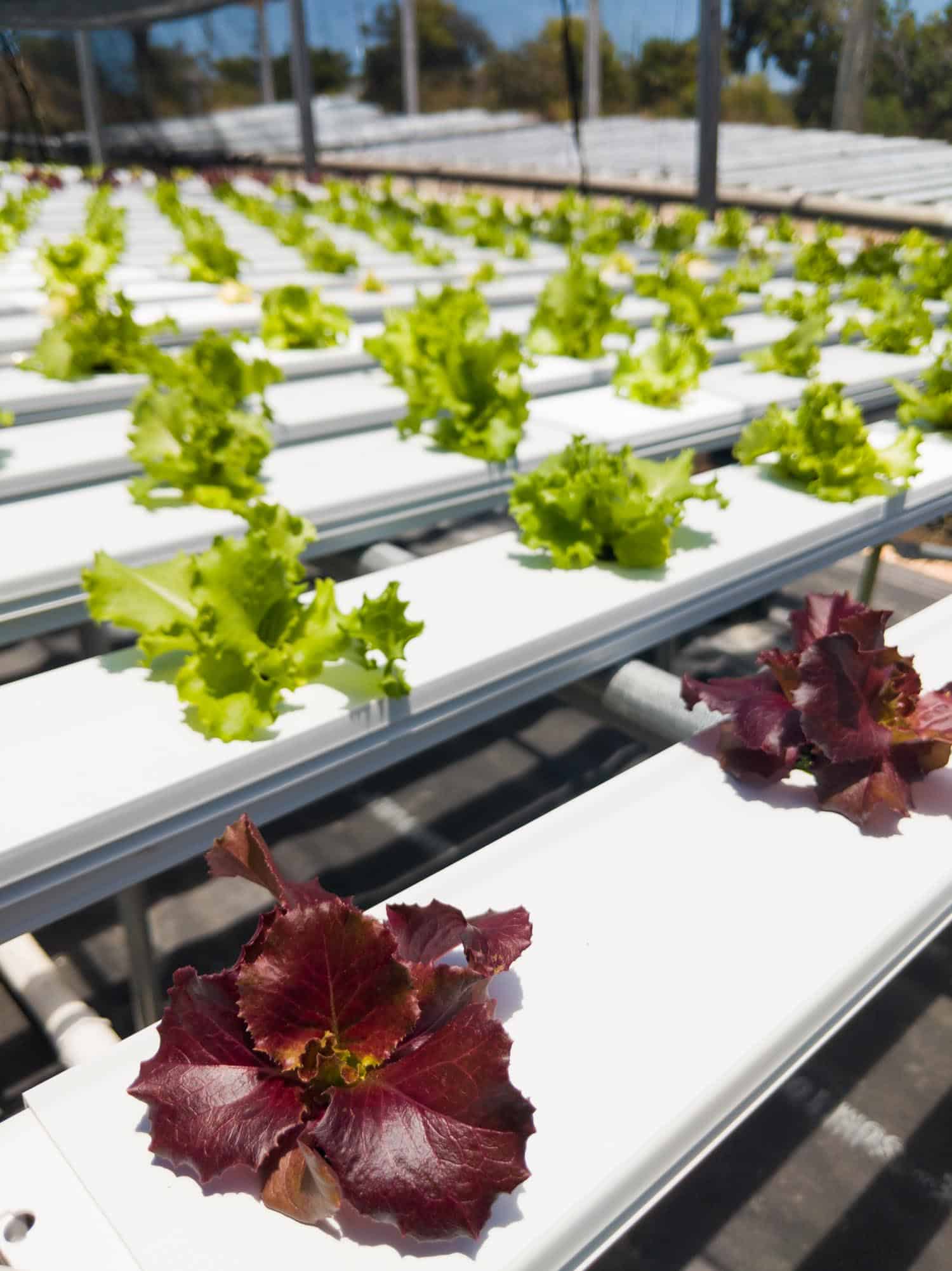When I travel I always want to try local food, that is grown rather than flown into a country.
Yes I’m that annoying person asking if the fish is local, where it’s caught and if it’s sustainable.
I’m sure at times it can be exhausting to travel with me.
I really do try to minimize my “food diva” behaviour when I travel with others. I try to research as much beforehand.
I arrived in Anguilla prepared with a list of traditional Anguilla food and drink to try on my short press trip.
I knew what fish to order and what cocktails to try, even where to get it.
What I didn’t realize was the struggle to grow local food on the island.
Anguilla quickly won me over with its small town feel, lack of souvenir hustlers and pristine beaches. But it was a humbling experience.
I learned it is easy for a traveler to demand local food. But it is better to first understand just how difficult it is to put on the table.

Local Food Has Never Been Easy in Anguilla
Anguilla is a small British overseas territory with only 15,000 people. Its history is fascinating.
While, like much of the Caribbean, there were slaves working on plantations in Anguilla, there was no uprising or revolution against plantation owners.
In fact, the owners abandoned the plantations.
Not because they realized slavery was wrong. But because the land was so unsuitable for farming.
The land is primarily limestone, which is very difficult to work with successfully.
Plantation owners were greedy and realized they should move onto another island better suited for cotton and sugar cane.
Anguilla Food
And so today the island grows some of its food and raises some animals but not in any mass production effort.
Most of it comes in on a container on Thursdays from St.Maarten, flown in from other countries.
And on top of the land issues, Anguilla faces two more monumental issues:
Water: the most expensive part of farming, buying national water is expensive as it is limited.
It’s so expensive that locally owned AXA Beer is made in the US and shipped to Anguilla.
Farming with local water is difficult. Previous pricing did not distinguish personal use from commercial farming so farmers used well water and cisterns to offset fees.
Unfortunately farmers can’t use well water entirely as it lacks the nutrients plants like tomatoes need.
Weather: Hurricane Irma destroyed many farms and the threat of future hurricanes means:
- Fruits and vegetables must be planted early enough in the season so they can be harvested before hurricane season. This means they require hothouse like structures in the early cooler weather.
- These structures need to protect plants but also they cannot be permanent. Once there is a hurricane alert, they need to be deconstructed and stored.

The Departure of Agriculture is Trying to Help
As Anguilla has less than favourable growing conditions the department has an experimental or demonstrative farm.
It aims to help farmers understand how they can better grow things.

For example, it’s using sargassum (the seaweed invading Caribbean beaches) as mulch for some plants, and looking at others which thrive better under tarp.
The goal is to experiment with crops so that farmer’s can learn from success instead of risking their own experiments.
They also have a section for organic farming for experimentation.
If you want to visit this farm it is next to the tourism office in the Valley and they can arrange a visit.

Farmers are Innovating: Tanglewood Farm
One of the few local organic farms on Anguilla. Family owned, Lorna (lead photo: she told me she hates getting her photo taken) and her sister originally started it 12 years ago.
They were worried about chemicals in food and wanted to eat organic themselves.
The harvest was greater than they could eat so they started to give it away and then realized there was an opportunity to make it into a business.
They originally grew tomatoes, cucumbers and sweet peppers. However, Hurricane Irma destroyed the land and took their expensive farming structure with it.
Insurance for farms is often prohibited so they started over from scratch.
Today they grow local herbs, chives, spinach and lettuces through traditional farming and aquaponics.
Like other farmer, their greatest expense is government water, they incorporate well water and cisterns but eventually succumb to paying for national water.
Fortunately the government has recently introduced new lower rates for farmers which may make it more viable.
Best Things to Do on Anguilla Island
They are also experimenting with aquaponics, reusing the water and adding nutrients.
Local restaurants are beginning to request certain lettuces and greens that don’t transport well from overseas.
This creates new opportunities for both restaurants and farmers.
As well they’ve learned to be prepared for future weather. Next to the expensive aquaponics patch they are building a concrete building so that, with warning, they can disable everything and store equipment so that the only loss is the land.
Lorna’s farm is technically not open to the public, but she said if people called in advance she would show them around. Place an order with her, the aquaponic lettuce and local callaloo looks amazing.

How Travelers Can Help Support Local Food
- Buy Local: We visited JW Procters, a truly local supermarket with produce from local farmers. All of the product is identified, so you know whether it’s coming from Dominica or down the street. It also has a fantastic bakery where local people make baked goods and the supermarket sells it on their behalf.
- Choose local food. Yes I’m asking you to be annoying like I am. While it doesn’t make sense for restaurants to serve local beef or large animals (they require a lot of water) they can provide local produce and fish. By asking for local you are reinforcing that’s what locals want.
- Make a fuss about water bottles. Anguilla recently banned single use plastic. Hotels are using paper straws (although they get soggy so check out these collapsible metal straws) but they still use water bottles.
- If tourists started asking hotels why they still use plastic things could change. Until then I’m sticking with my LifeStraw. I picked it up after feeling uncomfortable with my own dependence on water bottles in Cuba. Previously, I had a Steripen in Cuba but it wasn’t reliable and I can take my LifeStraw anywhere.
- How does this help local food? Plastic goes into our ocean. Anguilla has a diet heavily dependent on local seafood. We need to protect our ocean and find an alternative to water bottles.I have so much admiration for the resilience farmers have in Anguilla. Despite all the challenges they are still trying to make it work. My hope is that as they rebuild the island, we as tourists can help by contributing to their efforts and supporting local food in Anguilla. Traveling to countries to eat isn’t just about enjoying but also encouraging a sustainable economy and future so we can return.
And believe me, I want to return to Anguilla.
Disclosure: I was a guest of the Anguilla Tourist Board who invited me to attend the Extraordinary Eats festival. They did not request I write anything about Anguilla food or decide that it was my favourite new country of 2019.